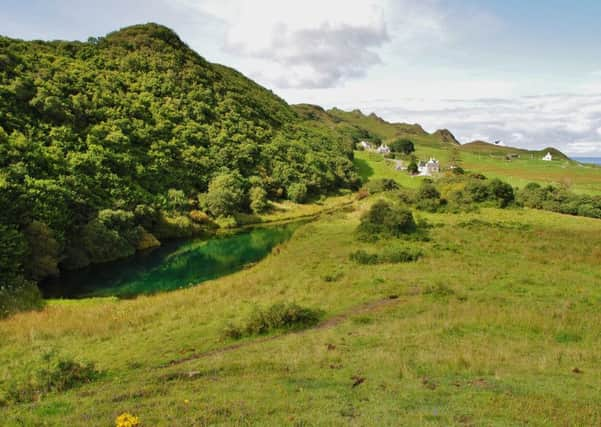4 hidden tourism gems on the Isle of Skye


But while there are many famous tourist spots across the island, there are some not so well known?
LOCH SHIANTA
In Medieval times holy wells were very important and Tobar Loch Shianta was the most celebrated healing well in Skye.
Advertisement
Hide Ad

The Gaelic people believed in the healing power of the indigenous plants all around them, including those found on the shore at Loch Shianta.
FLODIGARRY FOSSIL BEACH
The stunning beach of Flodigarry has not only amazing views but Oxfordian sediments, containing good pyrite and calcite fossils. While the wildlife is amazing, this location is a fantastic place to spend a day to look for fossils on the low tide.


On the exposed clay bedrock and among the boulder-strewn shoreline fossils can be found on the surface. Visitors, however, are reminded to only remove fossils on the surface or lying loose.
MACLEOD’S MAIDENS
On the southern tip of the Duirinish peninsula, and close to Idrigill Point, stands three sea stacks in a dramatic setting.
The tallest stack – the mother – rises over 70m out of the sea and she is accompanied by her two daughters, standing just off the cliffs of Maidens’ Point.
Be prepared, though, for a 16km return walk to Macleod’s Maidens.
Advertisement
Hide AdThe terrain holds no big challenges either, though the path does rise and fall twice in each direction and by the end of the walk you will have climbed a total of around 500m. Despite its straightforward nature, don’t treat it too casually. When you reach the Maidens you will be 8km from the nearest road. That’s a long way in an emergency.
ST COLUMBA’S ISLE
Between Protree and Dunvegan is St Colmba’s Isle, where this are ancient ruins and graves, stretching back over many centuries.
Advertisement
Hide AdSt. Columba is much better known for his association with the island of Iona, but this was the site on which he founded the cathedral of the bishops of the Isles.
This was the centre of Christianity in the Hebrides from 1079 to 1498. There are obvious ruins of two small buildings, and the outlines of others can be traced.